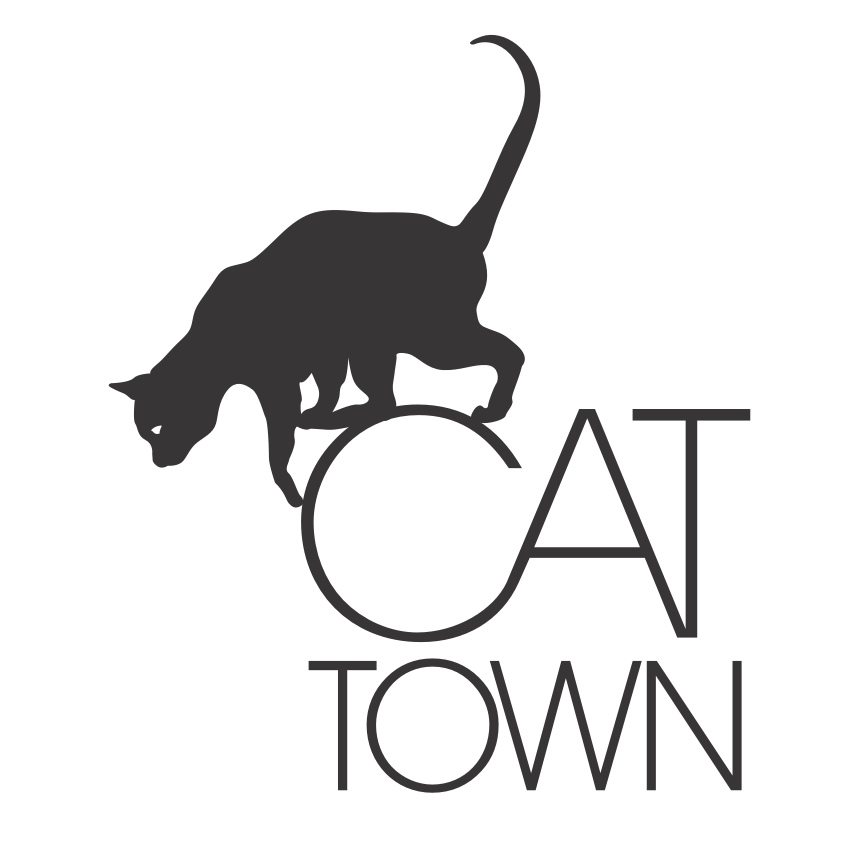Deep Dive: Feral or Fearful?
For cats, socialization is a spectrum. On one end, you have extremely friendly cats who run up to greet total strangers. On the other end, you have feral cats who see people as problems to be avoided. In the middle, you have cats who haven’t made up their minds about people yet.
The first three cats to join our pilot program — Carlo, Francis, and Theo
To make things even more complicated, confidence is also on a spectrum — and in our experience, socialization and confidence don’t always go hand in hand. So, you can have a highly confident feral cat who might eat your free cat food (but won’t let you touch them), or you might have a shy but social cat who’ll hide before becoming your BFF.
At the shelter, cats face many stressors, including strange smells, unfamiliar territory, and the sound of barking dogs. It can be hard to know what kind of cat you’re looking at when you meet them in this environment.
We rely on a few telltale signs to know if we should take a chance on a cat who appears to be feral in a shelter cage. Do they have a history of living in a home? Will they eat high-value food or treats in the presence of people? Do they seem to relax — even a little — when people spend time with them, or do they seem to get more stressed? But when a cat is fearful in a cage and we’re missing that extra information, it can be even more challenging to assess how much of their behavior is due to stress and fear, versus how socialized they are.
So what can we do to determine who’s feral, and who’s simply fearful and needs our support? Enter Feral or Fearful, a new program Cat Town is piloting in collaboration with Oakland Animal Services (OAS). Inspired by the ASPCA’s Feline Spectrum Assessment, this program is designed to identify the best path forward for cats who present mixed signals in a cage, by assessing them in a lower stress environment to see how comfortable they are with people.
Theo in his Studio during his evaluation period. His interactions with us told us he was more fearful than under-socialized. Photo by Grace Fujii.
When Cat Town and OAS identify a cat who may — or may not — be feral, they get flagged to stay in Cat Town’s care for a three-week evaluation period. During this time, they get a respite from the stress of the shelter. The cats remain under the shelter’s guardianship while we assess them, and if we discern they’re feral, they go back to OAS for safe outdoor placement — something the shelter’s hardworking team does frequently and does well.
Our team’s evaluation process records observations during and after a variety of interactions that include watching from outside their room, a slow approach, eye contact, offering treats, touching them with touch tools, playing from a distance, playing within their reach, and exiting the room. We take close note of their body language to score the cat’s stress levels during each of these brief daily interactions from 1 (Fully Relaxed) to 7 (Terrified).
After three weeks, we make the call: are they feral, fearful, or somewhere in between? If they’re close enough to being socialized that we can support them, we do. In fact, the very first two cats to enter this program, Theo and Carlo, have made the move from their observation Studio to the big, free-roaming space at our Adoption Center! Here they can learn by watching other cats engage with people, and let their guards down on a timeline that goes at their pace.
Carlo relaxing in the free-roaming room at our Adoption Center. Photo by Teresa Wood.
A major component of what makes Cat Town‘s work successful is our dedication to working WITH our city shelter. When we try new things — like Feral or Fearful, Summer School, and the Forgotten Kitten Project — it’s because we’ve identified a problem alongside our shelter partners, and worked with them to find a solution. In this case, the issues we’re trying to address are how to best ensure that Cat Town’s resources go toward cats who’d be happy in homes, and how best to reduce the time those cats wait for our help.
Another important aspect of our success is you! Your support allows us to try new approaches that may or may not work, but have the potential to make a major impact in our community. Because you believe in us, we can continually ask ourselves, “What more can we do to help?” and then take action. You make it possible for Cat Town and OAS to be a bright beacon for cats in a state with some of our country’s highest euthanasia rates.
We’re excited to see how this pilot program affects our ability to step in quickly to support the cats who benefit most from Cat Town’s support. Stay tuned to hear how this pilot goes, and what lessons we learn along the way!



